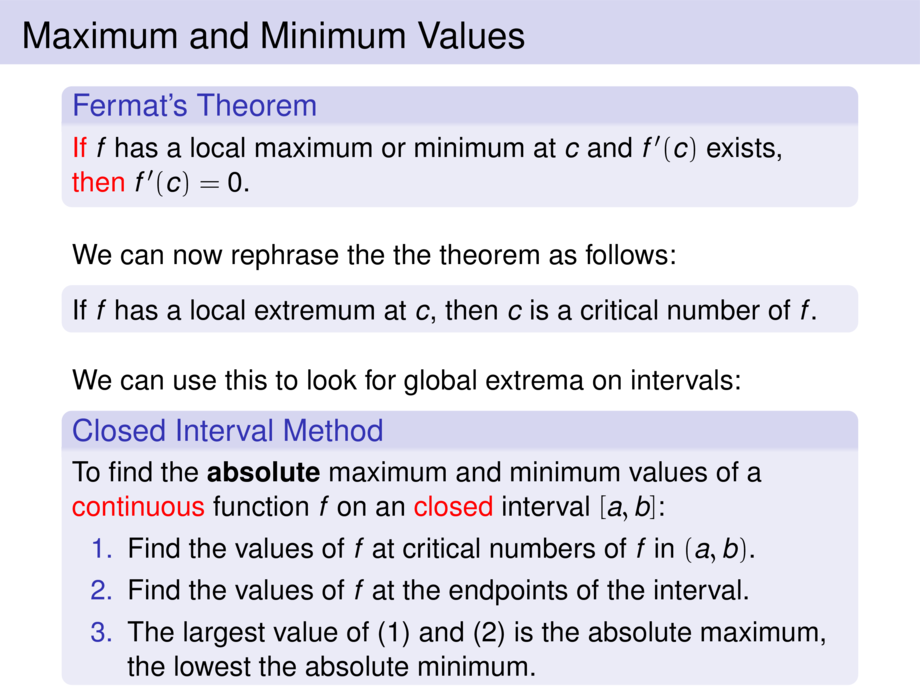



































































































139/209
\begin{frame}
\frametitle{Maximum and Minimum Values}
\begin{block}{Fermat's Theorem}
\alert{If} $f$ has a local maximum or minimum at $c$ and $f'(c)$ exists, \\
\alert{then} $f'(c) = 0$.
\end{block}
\pause\bigskip
We can now rephrase the the theorem as follows:
\begin{block}{}
If $f$ has a local extremum at $c$, then $c$ is a critical number of $f$.
\end{block}
\pause\bigskip
We can use this to look for global extrema on intervals:
\begin{block}{Closed Interval Method}
To find the \emph{absolute} maximum and minimum values of a \alert{continuous} function $f$
on an \alert{closed} interval $[a,b]$:
\begin{enumerate}
\pause
\item Find the values of $f$ at critical numbers of $f$ in $(a,b)$.
\pause
\item Find the values of $f$ at the endpoints of the interval.
\pause
\item The largest value of (1) and (2) is the absolute maximum, the lowest the absolute minimum.
\end{enumerate}
\end{block}
\vspace{10cm}
\end{frame}

